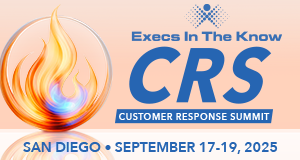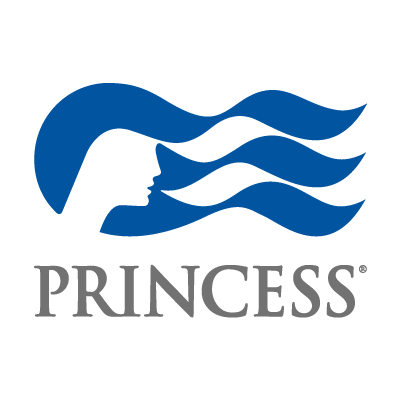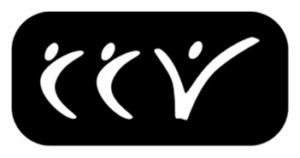In the Spotlight: Customer Portals
As discussed in this blog article which featured chatbots, self-service technology (SST) implementation and expansion initiatives are top of mind for many customer experience (CX) leaders. This was true even before 2020 when our industry was rocked by the impact of COVID-19, and these efforts have only accelerated into 2021. The world transitioned virtually overnight, and providing customers with the ability to find answers themselves was more essential than ever before. And also now more than ever before, consumers expect quick, accessible, accurate, and personalized solutions to their issues. We see evidence of this in our own research, the CXMB Series 2020 Consumer Edition report, where 75% of consumers attempted to use SSTs to resolve an issue, compared to only 43% in 2019. Furthermore, of those who attempted to use an SST, more turned to the company’s own websites for their answers (versus external websites or sources).
Customer portals and customer-facing knowledgebases via organizations’ websites are critical to meeting these consumer demands, which is the focus of this article. These solutions are not “new” SSTs, but many organizations recognize the need to expand the sophistication and capabilities to meet consumers where they are today.
We will provide an overview of customer portals, current statistics and trends, and characteristics of successful customer portals so you can ensure your own strategies are set up for success.
WHAT ARE CUSTOMER PORTALS?
Simply put, a customer portal is a dedicated and personal space on your organization’s website which allows consumers the ability to interact with your business, access valuable resources, manage their relationship with your company, and even contribute to your user community. It integrates your organizations’ self-service capabilities into a single hub, empowering your customers to resolve their issues effectively and accurately or access the information they need, bypassing human-assisted support. This is not to say those customer portals should act as replacements for live assistance, but rather an available option for the types of inquiries well-suited for self-service.
Portals offer information and solutions across a wide spectrum of sophistication from general FAQs, articles, and videos, to the ability to manage your business and account. In many cases, portals also act as an interactive hub, much like our own KIA Community.
CUSTOMER PORTAL STANDOUT CRITERIA
Driving customer engagement, boosting issue resolution, reducing costs, minimizing customer effort, and improving the overall CX is ultimately what an effective customer portal should deliver. To accomplish this, the following should be front and center as you develop your customer portal strategy:
- Understand this is not a “one and done” initiative – Your products and services change and your customers’ needs evolve. So, the contents and functionality of your customer portal should also evolve. Therefore, your infrastructure, technology, and resources must be in place to ensure it remains current, relevant, and useful.
- Know your customers and their journeys – Prioritize the content and navigation in your portals based on a solid grasp of your customers’ journeys, their most frequently asked questions, their pain points, and most common issues that can be resolved through the portal. It is easy to try to “boil the ocean,” but if you know your customers and their journeys, you will more effectively deliver on their expectations. This means frequently asking your customers what they need and monitoring their portal use, questions, and searches.
- Ensure ease of use and varied content types – Simply put, avoid the temptation to “over-engineer” your portal and customer knowledgebase. Information, resources, and solutions should be organized, easy to find, and intuitive. Users learn and consume information differently, so the more varied your content, the better. For visual learners, accessing content in the form of videos, diagrams, and illustrations is not only more visually appealing, but can be more intuitive too.
- Consistently update content – Many portals fail because the data and information become obsolete quickly. A customer will not give you many chances, so if the portal is difficult to use or outdated, the customer will likely not try again and will instead bypass the portal, opting instead to use a live channel.
- Serve up information proactively – Use technology and data to predict customers’ needs before they even ask or search. Based on their search criteria, push relevant content to them through the portal or even through other channels. For example, use their history to understand what they need and send an email or a chat with the resources they would find useful.
- Optimize for mobile, tablet, and desktop – It goes without saying that a portal should be optimized for use on any device. A large percentage of customers will access portals via a mobile application, or they will access your company’s website via their phone. The portal must be just as easy to use via those devices as on a laptop or desktop.
- Redirect to the right channel if needed – Most importantly, you need to ensure that issues and questions that cannot be handled via self-service or the portal are redirected to the channels best suited to resolve the issue. It should not be difficult for the customer to opt-out to a live channel or be automatically redirected to the most appropriate channel.
- Improve external search and site navigation – As addressed in this article, two common failure points in SST use are external search and site navigation. Often, companies focus on developing the content and resources, which is important, but external search is important to address as well. For example, consider changing what appears in a search engine when a customer searches your company’s customer support information – instead of immediately displaying a phone number, offer up other support options. Second, it goes without saying that a company’s site navigation plays a big role in the use of a customer portal. The portal and self-service options must be easy to find.
THE FUTURE OF CUSTOMER PORTALS
It is no secret that artificial intelligence (AI) is playing an increasingly important role in CX journeys. This holds true for customer portals as well, as organizations begin to integrate AI-enabled chatbots inside their customer portals. AI-chatbots that are equipped with machine learning and natural language processing (NLP) get smarter with every interaction, which not only gets answers into customers’ hands faster, but can also determine the customer’s intent, providing more proactive resolution via the portal.
Providing easy and quick resolution is just one benefit to customer portals. Data gathered from customer portal use can be of incredible benefit to all parts of the business. Self-service tools utilized for building out knowledgebases and portals that integrate with customer relationship management (CRM) systems and existing websites can provide insights for marketing, product development and planning, and general customer sentiment.
Most organizations have some sort of a customer-facing knowledgebase or portal on their websites. However, many companies are finding that it became a secondary thought once it was developed. Delivering on customer expectations and their desire to self-serve is an opportunity for companies to increase engagement and loyalty if customer portals are designed and executed effectively. You will find that you not only improve resolution and efficiency, but you will boost traffic to your website and gain credibility among your customers as a trusted source.






























